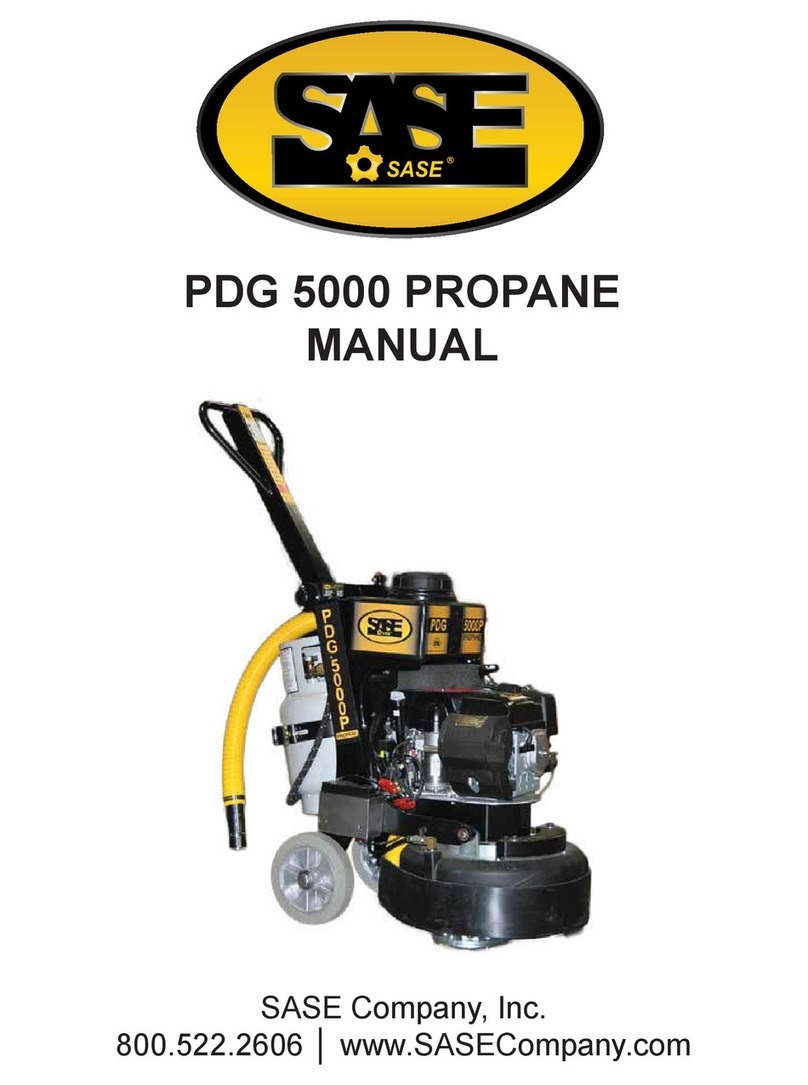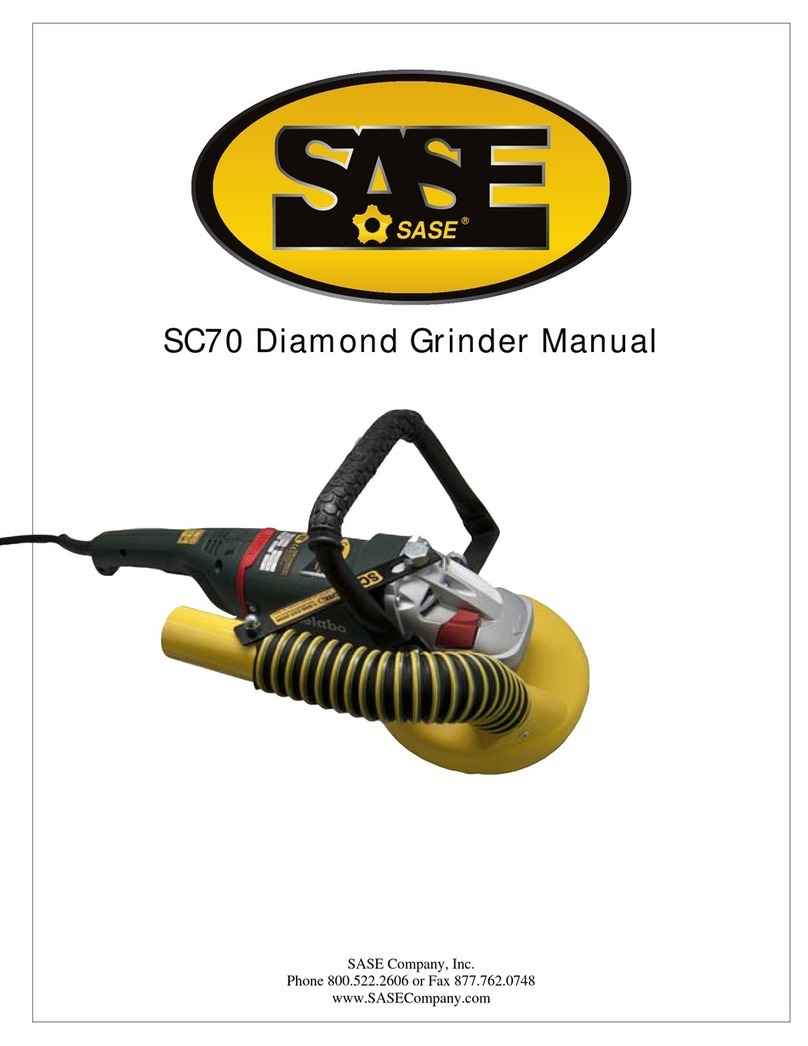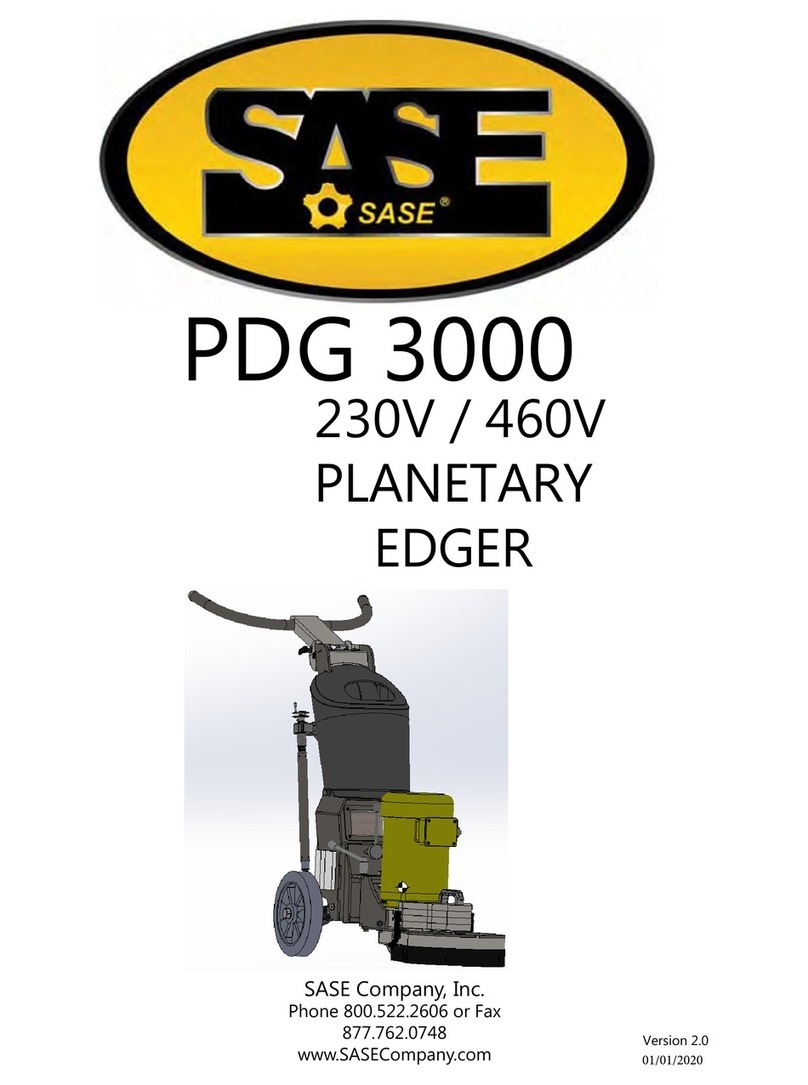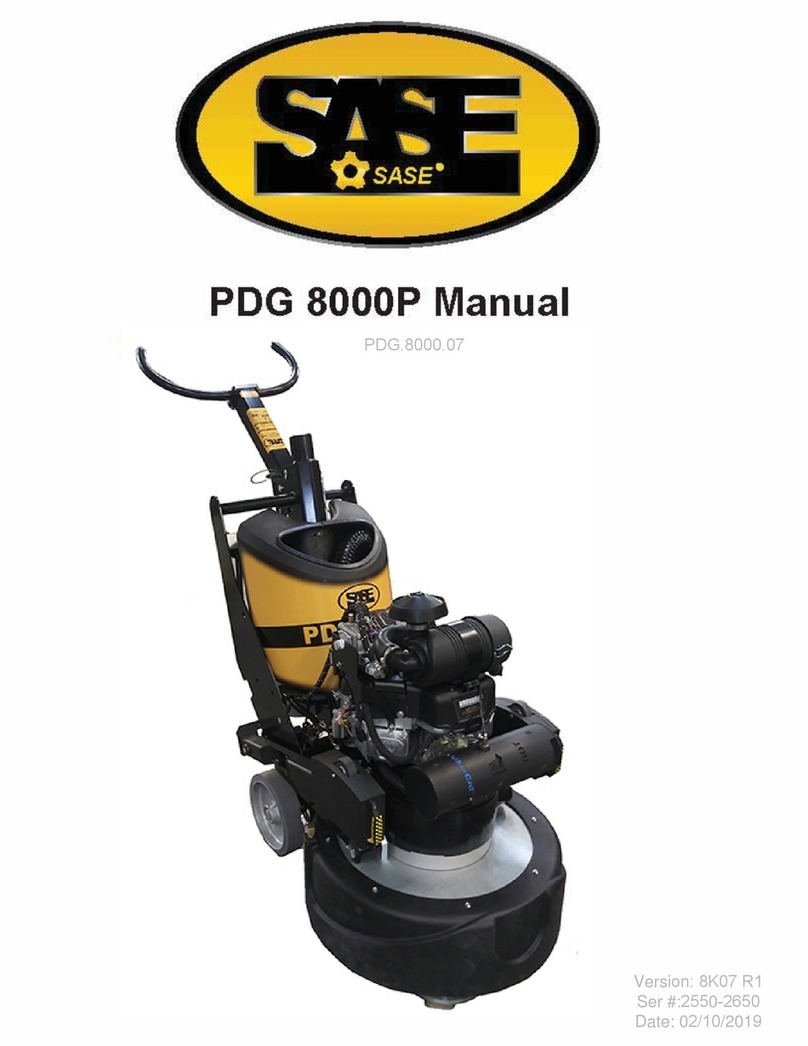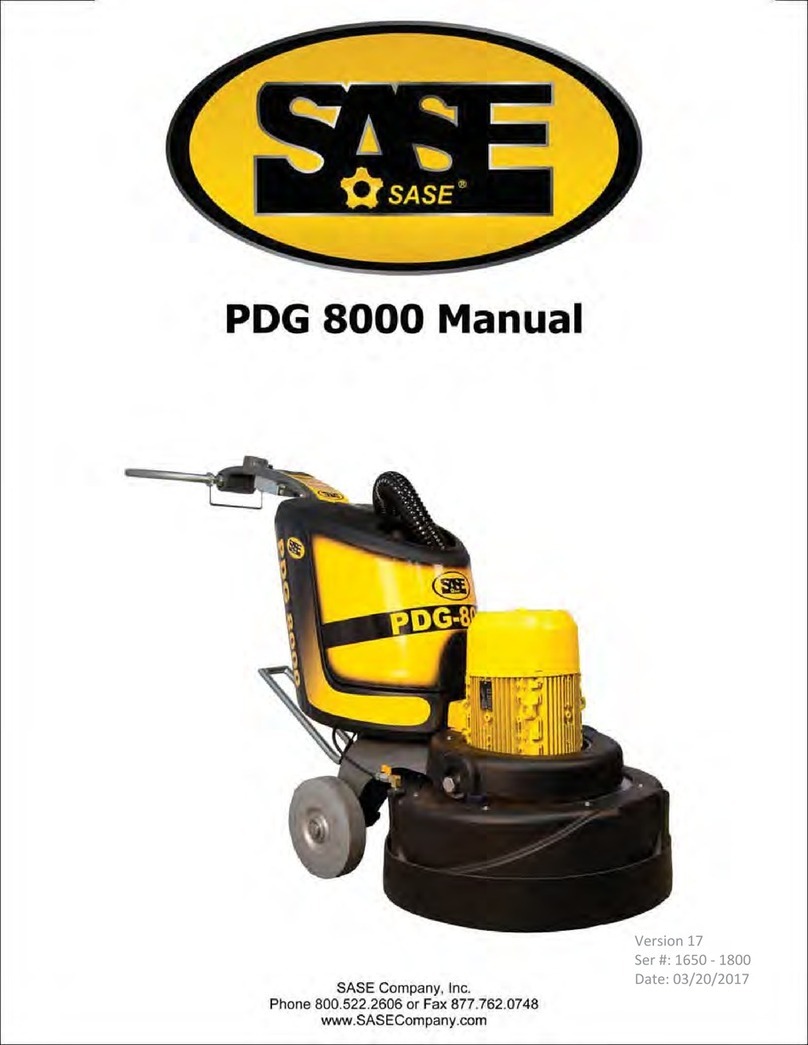
Introduction
The SASE PDG 6000 planetary diamond grinders are designed for wet or dry
grinding of marble, terrazzo, granite and concrete. Their applications range from
rough grinding through to a polished finish.
It is extremely important all users be familiar with the contents of this manual
before commencing operation of either machine. Failure to do so may result in
damage to machinery or expose operator to unnecessary dangers.
IMPORTANT
Only staff that has received the necessary training, both practically and
theoretically concerning their usage should operate the machinery.
Mechanical Action of Moving Machine Parts
Several parts of this machine are understood to be dangerous.
The Grind Head has a rotation and a counter rotation, keep body parts clear of
the moving grinder head.
The handle is heavy. Failure to lock the handle in place can result in operator
injury.
During operation, the machine has a twisting force. If you lose control of the
machine, it will walk away without you. The operator has to maintain control of
the machine. The machine moving freely can damage finished floor sections, or
wall sections. Not to mention anyone caught by the grind head could be
seriously injured.
Preventative Maintenance
Preventing the hazard is the best case scenario. Preventative Maintenance (PM)
is the responsibility of the operator.
Check and clean air filter regularly(200 operating hours)
Keep a Log Book for all service done.
Be sure that adequate vacuum system is in use.
Be aware of changes in operation, smell, noise, etc. while operating
Report to management ANY safety concerns.
Follow manufacturer recommendations for all motor maintenance.
Storage
The machine should always be stored in a cool, dry location. Moisture may upset
fragile electrical components.
Break-Down
The machine can be divided into two main parts.
1. Chassis/Frame section –This comprises the handle bars, body
panels, Propane tank, Steel frame and wheels.
2. Drum/Head –this comprises the motor, cover,
grinding/satellite/ planetary heads and internal components
The machine has been manufactured to allow movement between the chassis
and head via the connection point. This movement is important during the
grinding process as it creates a “floating” effect for the head. The floating gives
the head a self leveling effect, negating the need to adjust the height of the
head as the machine passes over floor areas with different slopes or
undulations.
Set-Up
Position the grinder in the working area. Make sure there are diamonds
underneath the machine, and that the head locks are tight.
IMPORTANT
Planetary head and grinding heads are set to turn in opposite directions of each
other.(as shown in this depiction)
When using the machine, each grinding head must always have the
same diamond type and number of diamonds as the other heads.
Each diamond must also be the same height as the next.
The Rubber skirt must be adjusted so that a good seal is established,
between the floor and the drum.
When setting the height of the handle, the operator is the guide. The comfort of
the operator during grinding is key. The handlebar should rest right at the
operator’s hip bone. When the machine is running, there will be a grinding force
to one side that can be felt through the handlebars. Use the hip to resist this
force instead of the arms.
Control Panel
The control panel consists of a number of buttons, giving 6 separate controls.
E- Stop - Brings the rotation to an abrupt halt, only in case of
emergency. Excessive use will increase motor wear. Also,
must be released(Gently twist clockwise)
Potentiometer - Controls the speed of rotation and counter rotation
simultaneously. Range: Low 1 to High 10
FWD - Starts the rotation of the drum in the 'forward' direction.
Will not work if inverter is in fault or if the E-Stop is
pressed down.
REV - Starts the rotation of the drum in the 'reverse' direction.
Will not work if inverter is in fault or if the E-Stop is
pressed down.
Stop - Brings the rotation to a gentle halt.
Reset - Reset the inverter, in case of fault. (takes a few seconds)







